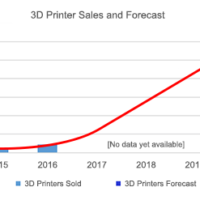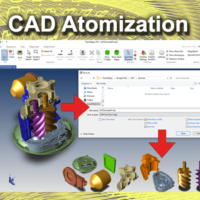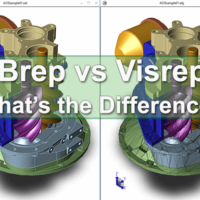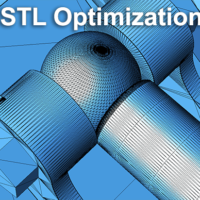
by Brad Strong | Feb 12, 2018 | 3D Printing, Blog, CAD Repair, CAD Translation, CAD Viewing, Polygonal Output, What's New |
“The 3D Printer market is exploding. With dozens of affordable 3D printers, arbitrary categories, endless specifications and variations, how do you choose the device that will best meet your industrial 3D printing needs?” By Brad Strong and Todd Reade The 3D printer market is exploding. According to the Gartner group, approximately 220,000 3D printers were sold in 2015, the number doubled to about 450,000 in 2016, and we are on track to see a factor of 15 increase to 6 million units sold, per year, in 2020*. These numbers include both personal and business usage. Here at TransMagic, we are interested in the business/industrial use of 3D printers....

by Brad Strong | Feb 9, 2018 | 3D Printing, Blog, CAD Translation, Polygonal Output, What's New |
Recent survey results from a 2017 Sculpteo survey highlighted the top priorities of 3D printing for the industrial sector, in terms of what they want to achieve with 3D printing. It seemed to us that these 3D printing priorities implied that they are also benefits of 3D printing, and some of these benefits are ground-breaking enough to the design and manufacturing industry that they deserve more clarification. The Sculpteo survey was answered by over 900 respondents, 60% of whom work in Europe, and 30% of whom work in the US. If you’re interested in checking out the rest of the survey yourself, see the link at the end of this article. Top...

by Brad Strong | Nov 13, 2017 | 3D Printing, Blog, CAD Diagnostics, CAD Performance, CAD Translation, What's New |
This article will demonstrate how materials are applied to models in TransMagic R12, and how parts and assemblies can then be interrogated for Mass Properties. Mass properties are particularly useful if you are generating quotes or estimates, and need to know the weight or volume of materials for the part or complete assembly. Another common use for mass properties is to get the volume calculation for estimating 3D printing print times and material costs. The Mass Properties dialog box also provides moments of inertia and allows you to create three planes that intersect at the centroid. Applying Materials Parts should already have a default material assigned;...

by Brad Strong | Oct 16, 2017 | 3D Printing, Blog, CAD Translation, What's New |
CAD Atomization refers to the process of converting whole assemblies to separate, independent parts. This is a one-button process which can be used for both CAD and polygonal output. 3D printing houses can use Atomize to output all parts in an assembly to STL. If you are planning to do polygonal output, be sure to check Settings and adjust polygon density before outputting STL or other polygonal formats. This article covers various STL output settings. The Atomization process works whether you are using an assembly or a multi-body part (multi-bodied parts are single parts composed of two or more solid bodies); in both cases, parts and bodies are converted to...

by Brad Strong | Mar 20, 2017 | 3D Printing, Blog, CAD Translation, CAD Viewing, Polygonal Output, Support, What's New |
What are the advantages of Brep vs Visrep models, and how do you tell them apart? Brep Models Brep refers to Boundary Representation. As the name suggests, the boundary between solid and non-solid geometry is in view here, the solid geometry being a collection of interconnected surfaces. This is a mathematically precise representation of geometry. Depending on the format and the CAD software you have in your possession, the features and underlying sketches may be editable, or the shapes may be editable – but generally speaking, if you don’t have the CAD system used to create the file, you cannot edit the features or sketches unless you run a...

by Brad Strong | Feb 27, 2017 | 3D Printing, Blog, CAD Performance, CAD Translation, Polygonal Output, What's New |
30 Years of STL From a humble beginning in 1987, when STL was developed by the Albert Consulting Group for 3D Systems, the format has been become a mainstay for 3D printing and has remained virtually unchanged over all these years. The name STL was derived from STereoLithography; STL uses a series of linked triangles to roughly define the surface geometry of a 3D CAD model. General STL Optimization Guidelines Whether you’re using the STL file for 3D printing, machining, or other purposes, you’ll want to set the resolution or mesh density to meet your product or prototype requirements. If your resolution is too rough, you’ll end up losing or...







